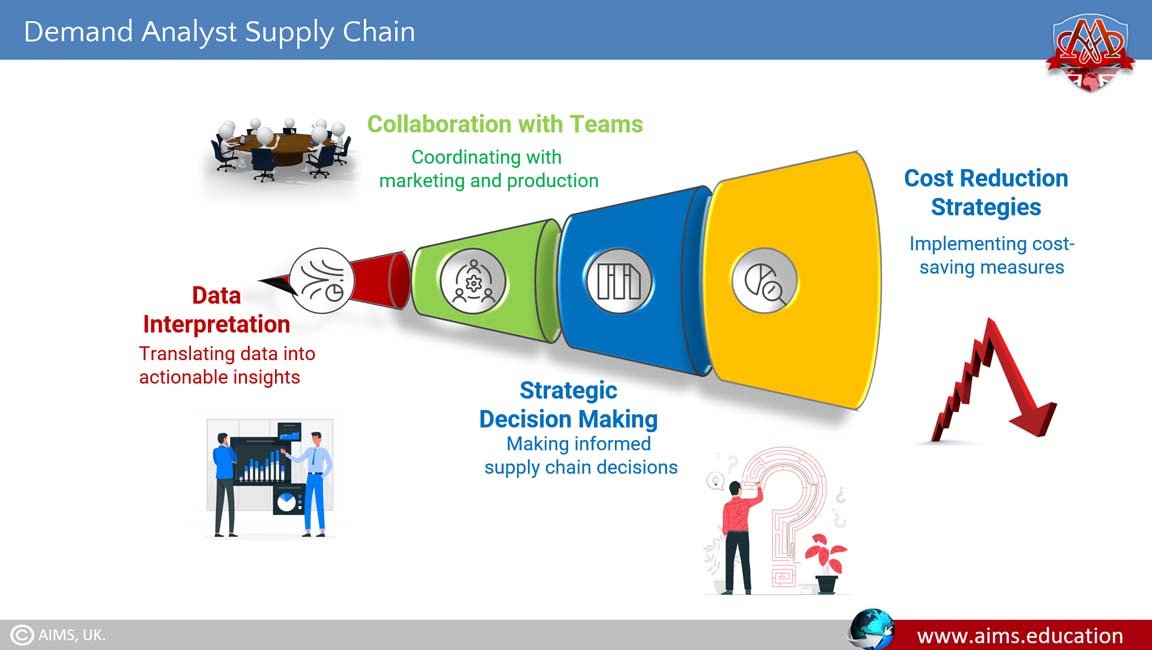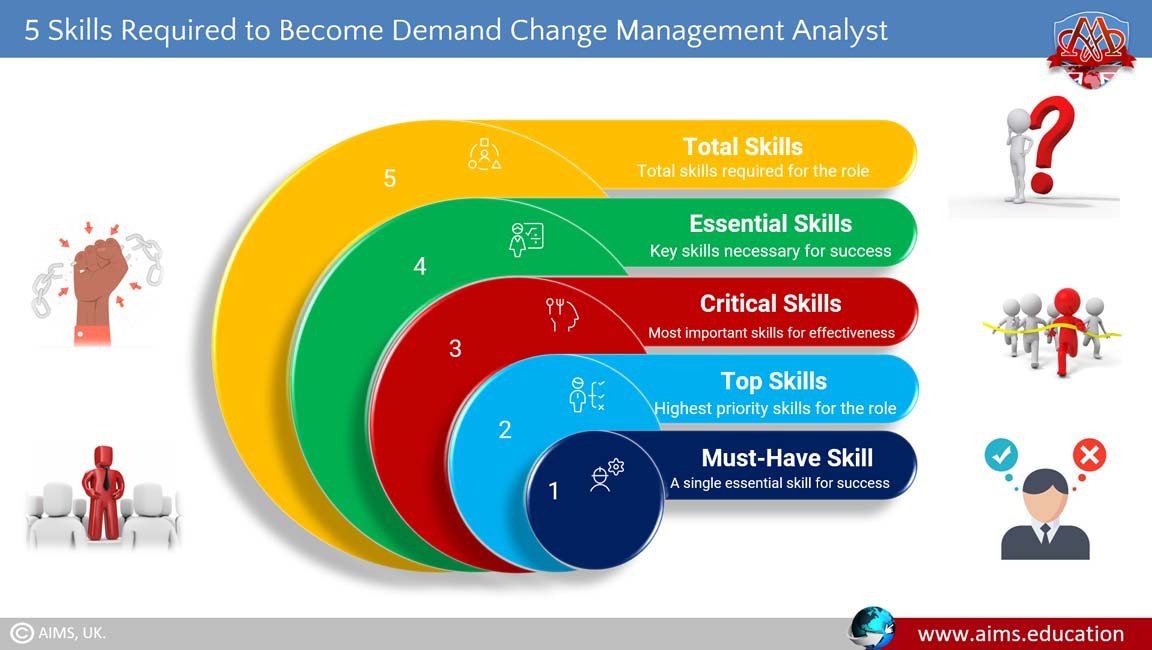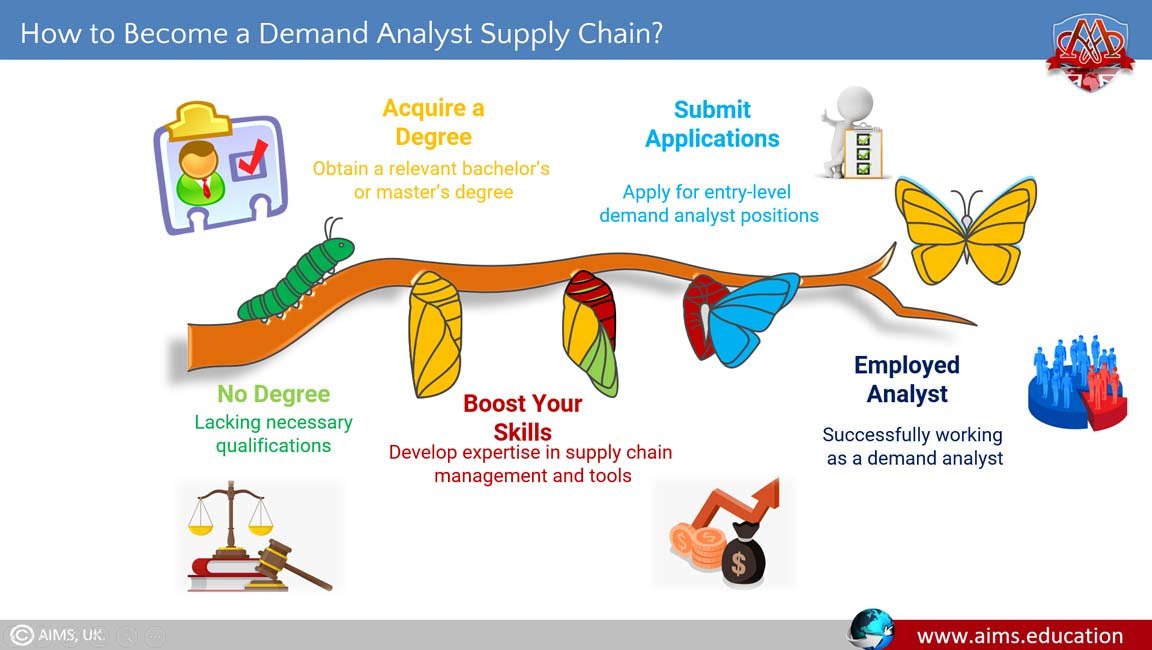What is a Demand Analyst Supply Chain?
Demand analyst supply chain, also known as supply-demand analysts, specialize in foreseeing and scrutinizing market demands through data and statistical analysis systems. In supply chain management, they associate product accessibility with customer demands. This includes collaboration with the marketing and production team and making strategic decisions. They provide smooth and easy supply chain strategies for companies and ensure on-time delivery of products at reduced cost.
The demand analyst supply chain works on specific projects, such as product launches in a new country or minimizing costs by recognizing new suppliers or routes. It acts as a contact person between the company and its suppliers. They are responsible for searching reasonable prices, negotiating deals, monitoring inventory stocks, and tracking product requirements.
Role of Demand Analyst in Supply Chain Management
Demand analyst supply chain work for businesses either small or big where supply chain management is required. They are also needed in e-commerce which sells small items such as clothing, food, toiletries, and shoes, and large items such as electronics, cars, furniture, pharmaceuticals, and so on. Demand analyst supply chain is required to be specialized in some focus areas of supply chain management, including:
- Demand planning
- Supply chain network design
- Raw material sourcing
- Production planning
- Inventory planning
- Distribution planning
5 Skills to Become a Demand Analyst Supply Chain
Similar to other job roles, the supply chain business should need soft (workplace) and hard (technical) skills. Below are the skills necessary for a supply chain demand analyst:
1. Communication Skill
They should collaborate with multicultural colleagues and teams such as customers and suppliers.
2. Interpersonal Skill
The demand analyst supply chain management deals with the complex delivery of goods between suppliers, inventory, and customers. So effective communication between them is necessary for affection.
3. Critical Thinking Skill
They should be a critical thinker and make quick decisions about issues arising during supply chain operations. Also, demand analyst supply chains find ways to overcome costs and enhance efficiency.
4. Organizational Skill
They should maintain the records and all data from various systems to manage multiple tasks simultaneously.
5. Time Management Skill
Time management is important in today’s fast-paced global environment with competing urgencies and meeting deadlines. Therefore demand analyst supply chain must have time management skills.

5 Major Responsibilities of the Demand Analyst Supply Chain
The demand analyst is the mediator between various supply chain management companies that want to buy overseas, functioning end-to-end projects ensuring products are delivered from point A to B. Therefore, the main duties of demand analyst include:
- Checked data on recent company operations, controlling various sections like sourcing, warehousing, supplies, and production schedules.
- Gathering and analyzing data to minimize costs and enhance efficiency.
- Controlling supply chain tasks and warehousing.
- Managing skilled relations with vendors as a company representative to endorse an optimistic image.
- Finding ways to optimize the supply chain planning processes such as assessing approaches, procedures, instruments, and technology.
How to Become a Demand Analyst Supply Chain?
To become a demand analyst supply chain, you should have a bachelor’s degree. If you have one previously and want to switch careers, skip the first step and continue to grow your skills and experiences. Below are the steps to get started as a demand analyst supply chain.
Step 1: Acquire a Degree
To become a demand analyst supply chain you need a bachelor’s or master’s degree to start a job. Some people land this job without a degree. Still, the chance of getting hired is pronounced when you have a degree, especially in business, engineering, finance, economics, statistics, supply chain management, business administration, education, mathematics, and marketing. Because the field of demand analyst is tough and requires management in a complex and fast-paced environment. So the knowledge of supply chain management tools and systems is also necessary for the strong foundation of business insights.
Step 2: Boost Your Skills
You should build up strong knowledge about:
- Supply chain management and supply chain analytics.
- Have strong communication skills to collaborate with multicultural suppliers, customers, and colleagues.
- Have technical skills and work with supply chain tools and systems.
- Robust time management skills to ensure the timely delivery of finished goods and raw materials.
- Must have command of the following supply chain management software:
- MS Excel
- MPS/MRP systems
- Crystal reports and PowerPoint
- Production methods
- Resources management
- Applicable software applications
- MS word
Step 3: Submit for Entry-level Jobs
Now, you are ready to apply for a job. Follow these steps:
- Create your resume.
- Write a cover letter.
- Search for industries that require a demand analyst supply chain.
- Submit your resume and cover letter in an industry.
- Prepare for the interview.
Supply chain graduates study demand analyst supply chain in detail during supply chain management courses offered by AIMS including the logistics management and supply chain diploma and MBA degree in supply and logistics management to develop skills, so the students can easily work as demand analysts in any organization.

Demand Analyst Supply Chain Job Descriptions
The following example helps you to understand the job description of a demand analyst supply chain.
1. Position
“Entry-level demand analyst in the supply chain department”.
2. Requirements
Managing and reporting on demand and supply for all goods, tracking costs of new products/materials, and communicating with employees across the organization to keep everybody notified of current situations. Daily tasks include data analysis to recognize any potential issue in demand or supply for goods, tracking products, interaction with vendors to confirm they can deliver what is required, keeping relations with employees across the organization to stay updated, and ready reports on findings and updates to management.
3. Characteristics Responsibilities and Duties
- Analyze the location of materials, supplies, and products.
- Estimate market changes and perceptions to optimize and forecast process performance.
- Expand business relations with suppliers and clients.
- Create strategies to reduce the cost or time needed to store and deliver products.
- Assess logistics systems, and recognize and urge areas for optimization.
4. Education and Experience
This position needs a bachelor’s degree in business, supply chain management, or systems engineering.
5. Required Skills
- Strong data analyzing ability.
- Ability for inventory management.
- Business and managerial management abilities.
- Communication, organizational, and critical thinking skills.
- Profound attention to all facets.
6. Preferred Qualifications
- Bachelor’s in business administration, operations management, or any related field.
- One year of experience in a supply chain position or relevant.
- Robust analytical skills.
- Ability to work in a group or team.
- Proficient in computer software, such as Excel and Outlook.

Frequently Asked Questions
Q1: What does a demand analyst do in the supply chain?
They forecast demand, analyse sales and inventory data, and align planning with procurement, production, and distribution to ensure on-time, cost-effective fulfilment.
Q2: Which industries hire supply chain demand analysts?
E-commerce, retail, FMCG, automotive, electronics, furniture, pharmaceuticals, and any business managing complex sourcing, inventory, and distribution.
Q3: What core skills are required for demand analysts?
Communication, interpersonal collaboration, critical thinking, organisation, and time management—plus strong analytical ability and tool proficiency.
Q4: Which tools and systems should a demand analyst know?
Excel, MPS/MRP systems, reporting tools like Crystal Reports, presentation tools such as PowerPoint, and knowledge of production and resource management systems.
Q5: How does a demand analyst support cost reduction?
By analysing operations data to identify inefficiencies, optimising stock levels, improving supplier terms, and recommending process and network design changes.
Q6: What are typical responsibilities for this role?
Demand forecasting, inventory tracking, supplier coordination, reporting on risks and performance, and recommending improvements across sourcing to warehousing.
Q7: What education is needed to become a demand analyst?
A bachelor’s degree is common—business, supply chain, engineering, economics, statistics, or related fields—plus hands-on experience with analytics tools.
Q8: How can graduates enter the profession?
Build core skills, prepare a targeted CV and cover letter, apply to entry-level roles, and practise interviews focused on data analysis and planning scenarios.
Q9: What are common deliverables for demand analysts?
Forecasts, inventory and service-level reports, exception alerts, supplier performance updates, and recommendations to optimise planning processes.
Q10: How does the role interact with suppliers and internal teams?
They coordinate with vendors on capacity and lead times and align with marketing, production, and warehousing to balance demand, supply, and costs.
Q11: Which competencies help career progression?
Advanced analytics, forecasting, inventory optimisation, stakeholder communication, and continuous improvement across planning systems and processes.
